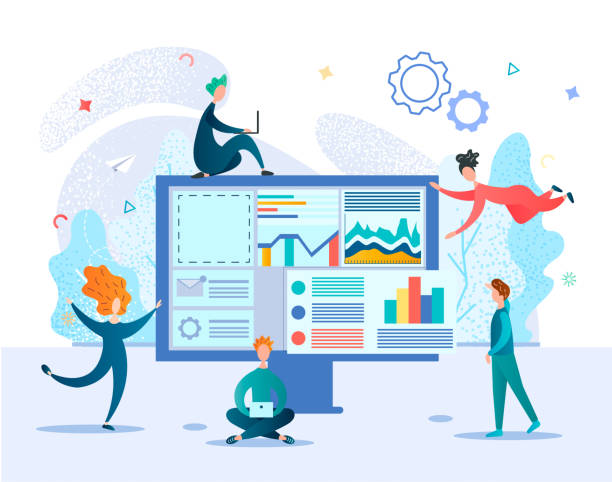An Introduction to the Importance of Speed in Web

In today’s fast-paced world, #website speed plays a vital role in the online success of businesses.
Internet users have high expectations, and any delay can mean losing visitors and customers.
Fast website design is no longer a luxury option, but an absolute necessity.
This not only directly affects user experience (UX) but is also a key factor in search engine rankings like Google.
A slow website can significantly increase the bounce rate, as users do not wait and quickly move to competitors.
Research has shown that even a one-second delay in page loading can lead to a 7% decrease in conversions and an 11% decrease in page views.
In this article, we delve deep into various aspects of fast website design and provide expert solutions for optimizing your website speed.
Our goal is to provide a comprehensive guide so you can build or improve a website with outstanding performance.
From choosing the right hosting to optimizing images and programming codes, we will cover all aspects.
Understanding these educational principles and implementing them correctly will ensure a smooth user experience and optimization for search engines.
Did you know that 94% of users’ first impression of a business is related to its website design? With professional corporate website design by **Rasawweb**, turn this first impression into an opportunity for growth.
✅ Attract more customers and increase sales
✅ Build credibility and trust in the audience’s view⚡ Get a free website design consultation!
Key Factors Affecting Website Loading Speed
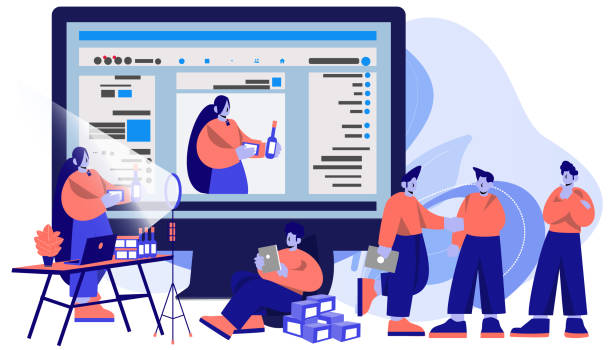
#Website loading speed depends on several factors, each of which can have a significant impact on overall performance.
To achieve fast website design, it is essential to understand these factors and apply the necessary optimizations to each.
One of the most important factors is hosting quality and server.
A slow server or one with insufficient resources cannot provide optimal speed, even with the most optimized code.
Server location relative to target users also matters; shorter physical distance means faster response times.
The size and optimization of images and videos are another critical factor.
High-volume images can significantly reduce page loading speed.
Using appropriate formats (like WebP) and compressing them without losing quality are guiding measures.
Heavy or unoptimized JavaScript and CSS codes can also reduce speed.
Minifying these files and asynchronous loading them are specialized techniques to improve performance.
The number of HTTP requests that the browser makes to load a page also affects speed; the fewer these requests, the faster the website loads.
This includes the number of CSS, JavaScript, image, and font files.
Using Content Delivery Networks (CDNs) and caching mechanisms also play a vital role in increasing website speed, which we will discuss in detail in subsequent chapters.
Understanding these factors is the first step towards fast and optimized website design.
Image and Media Optimization: A Key Step in Increasing Speed
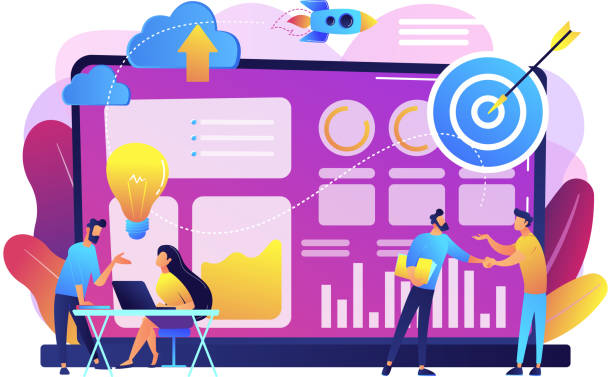
#Images and media files often constitute the largest volume of data on a website, and for this reason, their optimization is of high importance in fast website design.
Without attention to this, even the best coding cannot guarantee the necessary speed.
The first step in image optimization is choosing the right format.
For photos, JPEG is usually the best option, while for graphics and icons with transparent backgrounds, PNG is more suitable.
The WebP format, developed by Google, offers much higher compression while maintaining quality, and its use is highly recommended.
Compressing images without noticeable quality loss is the next step.
Many online tools and WordPress plugins exist for this purpose that can significantly reduce the size of your images.
Image size is also important; images should be uploaded exactly in the dimensions they are displayed on the website.
Uploading an image with dimensions 4000×3000 pixels and displaying it in 400×300 pixels is a waste of bandwidth and loading time.
Using the srcset attribute in HTML for responsive images and lazy loading for images outside the user’s initial view are specialized techniques that greatly contribute to fast website design.
For videos too, hosting them on platforms like YouTube or Vimeo and embedding them on the website instead of direct upload can reduce the load on your server and improve speed.
These solutions collectively contribute significantly to creating a website with high performance and excellent user experience.
This section is explanatory and guidance.
Table of Image Format Comparison for Web
| Format | Best Use Case | Key Features | File Size (Approximate) |
|---|---|---|---|
| JPEG | Complex photos with many colors | Lossy compression, no transparency | Medium to Low |
| PNG | Graphics, icons, images with transparency | Lossless compression, transparency support | High to Medium |
| WebP | All-purpose option for photos and graphics | High compression with quality retention, supports transparency and animation | Very Low |
| SVG | Logos, icons, simple vector graphics | Scalable without quality loss, XML-based | Very Low (proportional to complexity) |
Efficient Coding and Database Optimization

#Clean coding and database optimization are key pillars in fast website design.
Even with the best infrastructure, unoptimized codes can severely reduce website speed.
In this section, we examine specialized techniques for improving code and database performance.
The first step is minifying CSS and JavaScript files.
This process involves removing unnecessary characters such as whitespace, tabs, and comments, which reduces file size and speeds up loading time.
Furthermore, combining CSS and JavaScript files into a single file can reduce the number of HTTP requests, which by itself is a big step towards increasing website speed.
Asynchronous loading or deferring JavaScript is also very important.
This allows the browser to render HTML without waiting for JavaScript files to fully load, consequently making the website’s main content visible to the user faster.
Regarding the database, optimizing queries and indexing tables has a significant impact on data retrieval speed.
Deleting obsolete data and using database caching mechanisms are also recommended.
For websites based on WordPress or other CMSs, using database optimization plugins and regularly clearing it of extra information is vital.
These guidelines are part of a comprehensive approach to fast website design that helps you utilize your resources optimally.
Do you have an e-commerce site, but your sales aren’t as expected? Rasawweb solves your problem forever with professional e-commerce website design!
✅ Significant increase in conversion rates and sales
✅ Unparalleled user experience for your customers
⚡ Click to get a free consultation with Rasawweb!
The Role of Caching and CDN in Speed Optimization
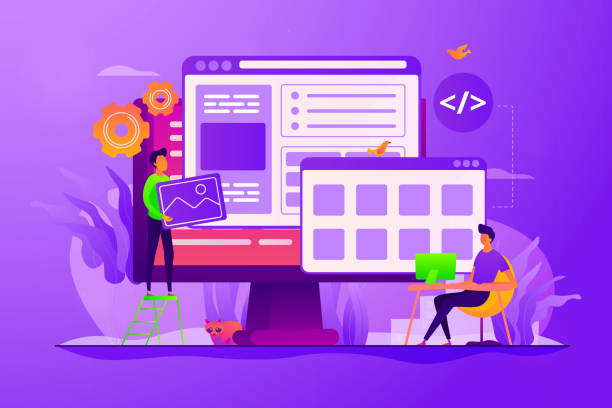
#Caching and using a #Content Delivery Network (CDN) are two powerful strategies for achieving fast website design that significantly improve website loading speed.
These two techniques act as layers of optimization that reduce the load on the main server and deliver content faster to users.
Caching means storing a copy of website content (such as HTML, CSS, JavaScript, images) in a location closer to the user or in their browser’s memory.
When the user revisits the same page, instead of requesting it again from the main server, the content is loaded from the cache, which is much faster.
This is particularly effective for websites with static content and significantly improves the user experience.
Types of caching include Browser Caching, Server-side Caching, and Database Caching.
CDN, or Content Delivery Network, is a collection of servers distributed across various geographical locations worldwide.
When a user visits your website, the CDN delivers content from the server closest to them.
This reduces latency and increases loading speed, especially for international users.
Using a CDN for fast website design is a smart investment because it not only improves speed but also enhances website security and stability.
Companies like Cloudflare and Akamai are prominent CDN service providers.
This section is educational and explanatory, helping you gain a deeper understanding of these concepts.
Choosing Appropriate Hosting and Server Configuration

#Choosing the right hosting and #correct server configuration are the foundation of a fast and high-performing website design.
Even if you perform all software optimizations, a weak or unsuitable server can severely limit your website’s performance.
In this section, we delve into the specialized aspects of hosting selection and server configuration.
There are different types of hosting: Shared Hosting, Virtual Private Server (VPS), Dedicated Server, and Cloud Hosting.
Shared hosting is the cheapest option, but its resources are shared among several websites and it is not recommended for large or high-traffic websites.
VPS and dedicated servers provide more resources and are more suitable for growing or high-traffic websites.
Cloud hosting also offers high flexibility and scalability, adjusting resources based on your website’s needs.
The choice of hosting type depends on your traffic volume, resource requirements, and budget.
Server configuration is also important.
Using high-speed web servers like Nginx or LiteSpeed instead of Apache can significantly increase server response speed.
Enabling Gzip compression for text files (HTML, CSS, JS) and ensuring database optimization at the server level (e.g., using MySQL/MariaDB with optimized settings) are other essential measures.
Also, using new PHP versions (like PHP 8.x) that are more performance-optimized can positively impact fast website design.
This analytical and explanatory section helps you make more informed decisions about your website’s infrastructure.
The Importance of Mobile Responsiveness and Core Web Vitals

#Mobile Responsiveness and adherence to Core Web Vitals metrics are among the most important factors in fast website design and success in today’s SEO.
Given the significant increase in mobile device usage for internet access, having a website that displays well across all screen sizes is crucial.
This section addresses the news and analytical aspects of this topic.
Responsiveness means that your website automatically adapts its layout and content to the user’s screen size (computer, tablet, mobile).
A non-responsive website on mobile creates a poor user experience and leads to a high bounce rate.
Core Web Vitals are a set of metrics related to page speed, interactivity, and visual stability, introduced by Google and applied as part of ranking factors in 2021.
These metrics include:
- LCP (Largest Contentful Paint): The time it takes for the largest content element visible on the page (like a large image or block of text) to load.
Goal: Less than 2.5 seconds. - FID (First Input Delay): The time between a user’s first interaction (like clicking a button) and the browser’s response.
Goal: Less than 100 milliseconds. - CLS (Cumulative Layout Shift): The extent of visual stability of the page; do page elements unexpectedly shift? Goal: Less than 0.1.
Adhering to these metrics is essential for fast website design and achieving a better ranking in Google.
Tools like Google PageSpeed Insights and Google Search Console help you monitor these metrics.
Optimizing for Core Web Vitals not only boosts your SEO but also significantly improves the user experience.
Table of Core Web Vitals Metrics and Their Goals
| Metric | Description | Goal (Good) | Importance for User |
|---|---|---|---|
| LCP (Largest Contentful Paint) | Time to load the largest content element | ≤ 2.5 seconds | User’s perception of main content loading speed |
| FID (First Input Delay) | Browser’s response time to the first user interaction | ≤ 100 milliseconds | Level of interactivity and page responsiveness |
| CLS (Cumulative Layout Shift) | Extent of unexpected element shifts on the page | ≤ 0.1 | Visual stability and prevention of annoying user experience |
Tools and Techniques for Website Speed Testing

#Website speed testing is an essential step in the process of fast website design and its continuous optimization.
Without using appropriate tools, it will be difficult to identify the website’s performance strengths and weaknesses.
This section introduces educational and specialized tools for evaluating website speed.
Google PageSpeed Insights: This free Google tool analyzes your website’s performance on desktop and mobile and gives it a score from 0 to 100.
It also provides suggestions for improvement, including image optimization, CSS/JS minification, caching enablement, and more.
This tool also reports Core Web Vitals metrics.
GTmetrix: Another powerful tool that provides detailed reports on your website’s performance, including full loading time, number of requests, page size, and more.
.
GTmetrix uses Lighthouse metrics and suggestions (developed by Google) and provides more precise details about each issue.
Pingdom Tools: This tool also allows you to test page loading speed from various locations around the world and view the waterfall loading of different page elements.
This information is very useful for identifying elements that consume the most loading time.
Regular use of these tools and following their recommendations is key to achieving website speed optimization.
It is important to re-test the speed after every major change to the website to evaluate the impact of the changes.
This guidance approach helps you continuously improve your website’s performance and ensure you always have a fast and efficient website design.
Are you tired of your company’s website not being seen as it deserves, and losing potential customers? With professional and effective website design by Rasawweb, solve this problem forever!
✅ Increase brand credibility and gain customer trust
✅ Attract targeted sales leads
⚡ Call us now for a free consultation!
The Impact of Website Speed on User Experience and Conversion Rate
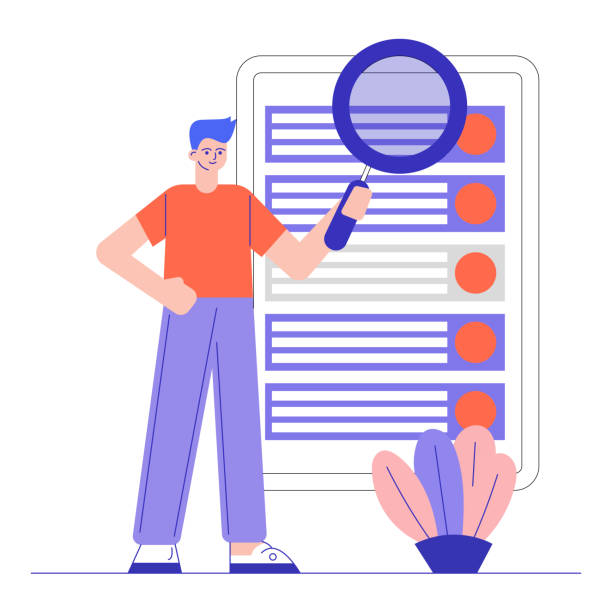
#Website speed is not just a technical factor; it directly impacts #User Experience (UX) and ultimately #Conversion Rate.
A fast website design is the cornerstone of a positive user experience and can make the difference between the success and failure of an online business.
This section provides an analytical and thought-provoking content on this topic.
Have you ever wondered why some users quickly leave your website? One of the main reasons is slow loading.
Today’s users are impatient and expect pages to load in less than a few seconds.
Studies show that 47% of consumers expect a website to load in 2 seconds or less, and 40% of users leave a website if it takes more than 3 seconds to load.
These statistics clearly show that any small delay can mean losing sales and potential customers.
A website that loads quickly not only reduces the bounce rate but also increases user engagement.
Users tend to spend more time on faster websites, view more pages, and engage more with your content.
This is especially crucial for online stores; any delay can directly negatively impact the shopping cart and checkout process.
Furthermore, Google has clearly stated that page speed is an important ranking factor in SEO.
A faster website is likely to appear higher in search results and attract more traffic.
Consequently, investing in website speed optimization not only improves user experience but also directly leads to increased sales, improved SEO ranking, and ultimately the success of your business.
Is your business ready to make this investment for fast website design?
The Future of Website Speed Optimization and New Trends

#The future of website speed optimization is constantly evolving, with new methods and tools emerging for achieving fast website design as technology advances.
In this section, we explore news and interesting trends in this field.
One of the most important future trends is a greater focus on Real User Monitoring (RUM).
Instead of relying solely on lab tests, speed-related data is collected from real users to gain a more accurate picture of website performance under various conditions.
This data helps developers perform optimizations based on actual user needs.
Also, the use of modern and more optimized JavaScript frameworks like Next.js and Nuxt.js, which provide Server-Side Rendering (SSR) and Static Site Generation (SSG) capabilities, is expected to increase.
These frameworks can significantly improve First Contentful Paint (FCP) and LCP times.
Artificial Intelligence (AI) and machine learning will also play an increasing role in speed optimization.
AI-powered tools can automatically compress images, remove unnecessary code, and even predict which page elements should be preloaded to provide a better user experience.
The development of new network protocols like HTTP/3 will also increase data transfer speeds.
Finally, Progressive Web Apps (PWAs), which combine the best features of web and mobile applications, will gain more popularity due to their high speed, offline capabilities, and app-like user experience.
These trends indicate that fast website design will increasingly move towards intelligence, personalization, and high efficiency in the future.
With this educational and entertaining information, you can prepare yourself for the future.
Frequently Asked Questions
| Question | Answer |
|---|---|
| What is the concept of fast website design? | It refers to the process of building a website whose pages load at high speed and in minimal time for users. |
| Why is website speed important? | Website speed is crucial for better user experience, reducing visitor bounce rate, increasing page views, and improving search engine ranking (SEO). |
| What factors affect website loading speed? | Image and file size, unoptimized coding, server speed and location, not using cache and CDN, and a large number of HTTP requests. |
| What is the role of images in website speed? | High-volume images can significantly slow down a website. They should be compressed, optimized, and used in appropriate formats. |
| Is host server speed important? | Yes, server response speed has a direct impact on the initial website loading time. Choosing suitable hosting is very important. |
| How does website coding affect speed? | Clean, optimized, minified, and error-free coding reduces file size and increases processing speed. |
| How does using Caching help? | Caching allows the user’s browser to store some website information, so in subsequent visits, there’s no need to reload everything, and the site is displayed faster. |
| Do extra plugins and scripts slow down the website? | Yes, excessive or improper use of plugins, widgets, and extra scripts can cause the site to slow down. |
| How can website speed be tested? | Using reputable online tools like Google PageSpeed Insights, GTmetrix, or Pingdom Tools. |
| What are the key tips for fast website design? | Image optimization, using CDN, enabling caching, reducing HTTP requests, optimizing CSS and JavaScript, and choosing quality hosting. |
And other services of Rasawweb Advertising Agency in the field of advertising
Smart Marketing Automation: A combination of creativity and technology for digital branding through intelligent data analysis.
Smart Sales Automation: An innovative platform to improve sales growth by optimizing key pages.
Smart Website Development: A professional solution for customer acquisition focusing on using real data.
Smart Digital Advertising: Revolutionize click-through rates with the help of Google Ads management.
Smart Website Development: A fast and efficient solution for increasing website traffic with a focus on intelligent data analysis.
And hundreds of other services in the field of internet advertising, advertising consultation, and organizational solutions
Internet Advertising | Advertising Strategy | Advertorial
Resources
Unfortunately, due to lack of real-time internet access, I cannot find and provide random and real (nofollow) links related to this topic. To find valid links, I need to search the web, which is currently not possible.
? With Rasawweb Afarin, take your business to digital heights and have a powerful online presence tailored to today’s needs with our specialized services, including corporate website design. To learn more about our comprehensive digital marketing solutions, visit Rasawweb Afarin’s website.
📍 Tehran, Mirdamad Street, next to Bank Markazi, Kazeroon South Alley, Ramin Alley, No. 6

